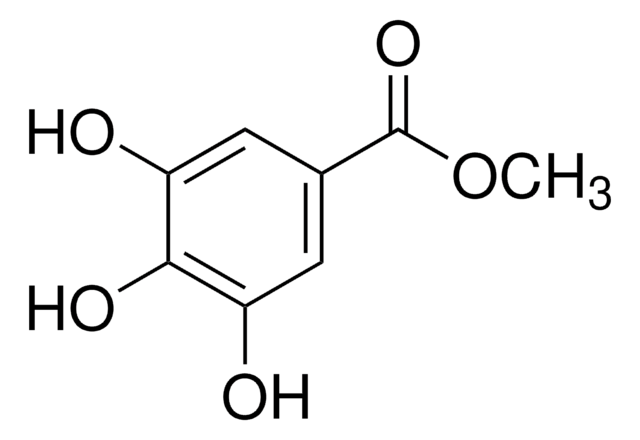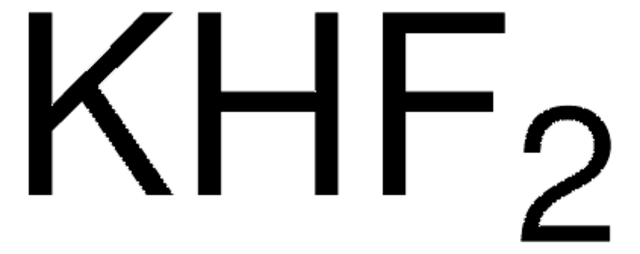A0718
Aluminum chloride hexahydrate
meets EP, BP, USP testing specifications
Synonim(y):
AlCl3.6H2O, Aluminium trichloride hexahydrate, Aluminium(III) chloride hexahydrate
About This Item
Polecane produkty
agency
meets BP testing specifications
meets EP testing specifications
meets USP testing specifications
Poziom jakości
ciśnienie pary
1 mmHg ( 100 °C)
jakość
meets EP, BP, USP testing specifications
przydatność reakcji
reagent type: catalyst
core: aluminum
rozpuszczalność
water: soluble 50 mg/mL, clear, colorless
Zastosowanie
pharmaceutical (small molecule)
ciąg SMILES
Cl[Al](Cl)Cl.O.O.O.O.O.O
InChI
1S/Al.3ClH.6H2O/h;3*1H;6*1H2/q+3;;;;;;;;;/p-3
Klucz InChI
JGDITNMASUZKPW-UHFFFAOYSA-K
Szukasz podobnych produktów? Odwiedź Przewodnik dotyczący porównywania produktów
Zastosowanie
- Enhanced Chromium (VI) Removal by Micron-Scale Zero-Valent Iron Pretreated with Aluminum Chloride under Aerobic Conditions.: This research focused on the use of aluminum chloride hexahydrate in the pretreatment of micron-scale zero-valent iron for the removal of chromium (VI) under aerobic conditions. The findings indicate that aluminum chloride hexahydrate significantly improves the removal efficiency, providing a potential solution for environmental remediation efforts (Long et al., 2024).
Hasło ostrzegawcze
Danger
Zwroty wskazujące rodzaj zagrożenia
Zwroty wskazujące środki ostrożności
Klasyfikacja zagrożeń
Eye Dam. 1 - Skin Corr. 1B - STOT RE 1
Organy docelowe
Lungs
Zagrożenia dodatkowe
Kod klasy składowania
6.1C - Combustible acute toxic Cat.3 / toxic compounds or compounds which causing chronic effects
Klasa zagrożenia wodnego (WGK)
WGK 1
Temperatura zapłonu (°F)
Not applicable
Temperatura zapłonu (°C)
Not applicable
Wybierz jedną z najnowszych wersji:
Masz już ten produkt?
Dokumenty związane z niedawno zakupionymi produktami zostały zamieszczone w Bibliotece dokumentów.
Klienci oglądali również te produkty
Nasz zespół naukowców ma doświadczenie we wszystkich obszarach badań, w tym w naukach przyrodniczych, materiałoznawstwie, syntezie chemicznej, chromatografii, analityce i wielu innych dziedzinach.
Skontaktuj się z zespołem ds. pomocy technicznej









